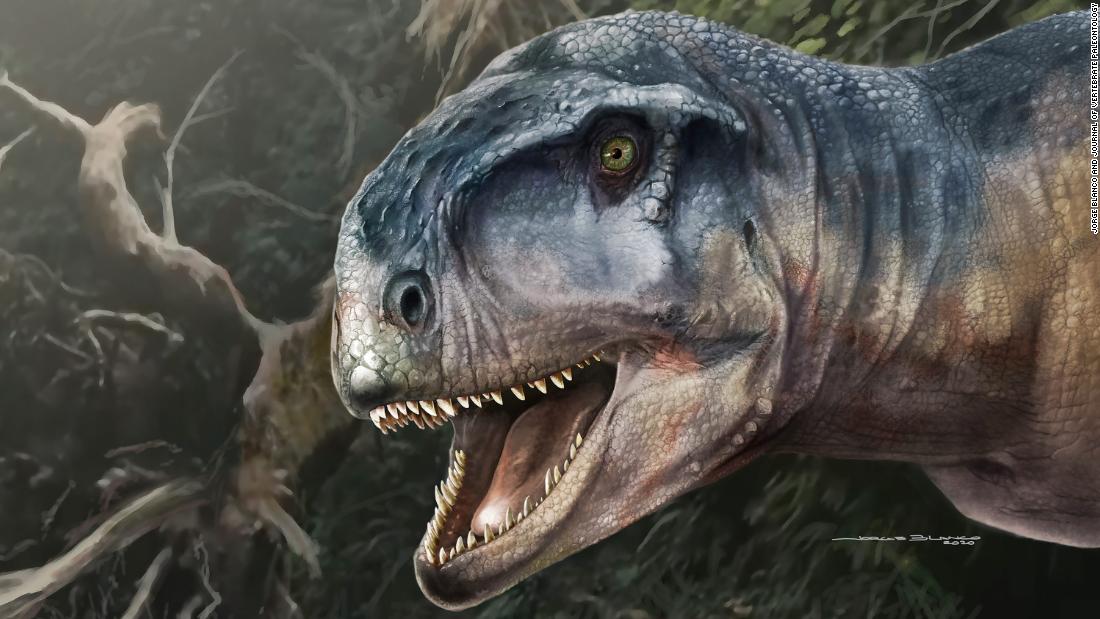Paleontologists in Argentina have identified an unknown species of dinosaur that would have used its huge claws, powerful bite and keen sense of hearing to hunt prey in Patagonia 80 million years ago.
The fossilized remains of the Llukalkan aliocranianus include a very well-preserved and unbroken skull and were unearthed in the Bajo de la Carpa Formation in Argentina. Llukalkan means “the one who causes fear” in the indigenous Mapuche language, and aliocranianus, which in Latin means “unusual skull.”
Part of a family of dinosaurs called abelisaurids, this creature would have largely resembled a Tyrannosaurus rex in appearance, with tiny arms. But an unusually short and deep skull, which could have ridges, bumps, and horns, sets it apart. At least 5 meters long, about the size of an elephant, the Llukalkan aliocranianus would have roamed Patagonia and other areas of the prehistoric southern subcontinent of Gondwana, which included Africa, India, Antarctica, Australia and South America.
A reconstruction of the dinosaur’s skull.
Its most distinctive feature was a small air-filled sinus in the middle ear area that has not been seen in any other abelisaurids found so far, according to research published Tuesday in the Journal of Vertebrate Paleontology.
This means that the Llukalkan probably heard differently, and perhaps better than other abelisaurids, somewhat more similar to hearing a modern crocodile.
“A peculiarity of this dinosaur is that it has cavities in the ear area that other abelisaurids did not have, which could have given this species different hearing capacities, possibly a greater hearing range. This, together with its keen sense of smell, would have given this species a great capacity as a predator, “the lead author of the find, Federico Gianechini, a paleontologist at the National University of San Luis, Argentina, told Citizen Free Press in an email.
An artist’s impression of what may have been the Llukalkan aliocranianus made by Jorge Blanco.
The fossilized remains were discovered by accident in 2015 during an excavation in a place known as La Invernada, near the city of Rincón de los Sauces, in Neuquén province, Gianechini said. The main purpose of the excavation was to unearth a sauropod dinosaur (large, heavy plant-eaters) that they had found a year earlier, but noticed bones poking out of the soil surface a few days before completing their excavation.
The fossilized remains of Llukalkan aliocranianus included a very well preserved skull.
The exceptional hearing mechanism of this dinosaur suggests that abelisaurids flourished just before the extinction of the dinosaurs 67 million years ago.
“These dinosaurs are still testing new evolutionary pathways and diversifying rapidly just before going completely extinct,” said Ariel Méndez, study co-author and paleontologist at the Patagonian Institute of Geology and Paleontology, Argentina, in a press release.

